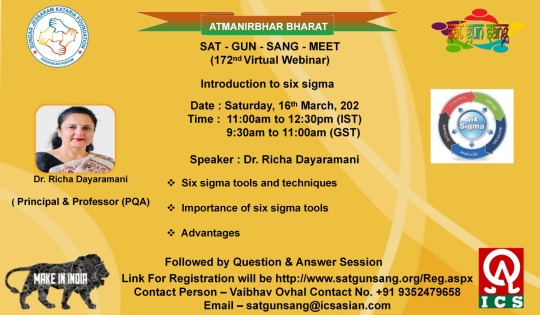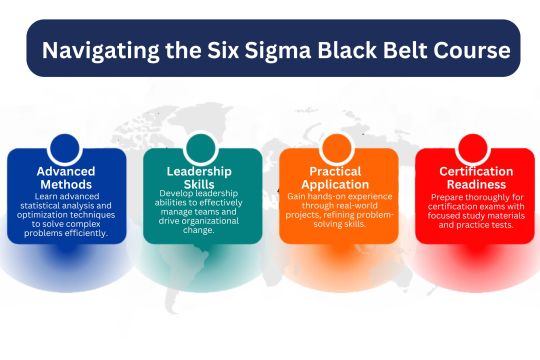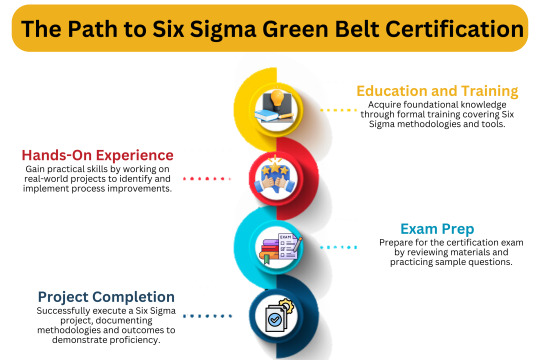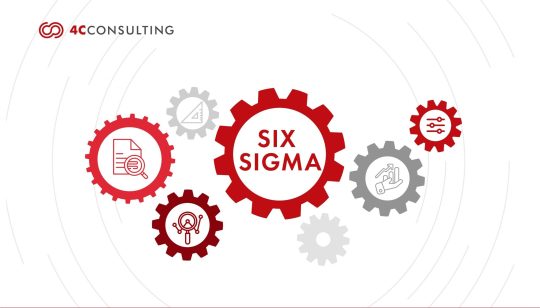#Six Sigma
Photo

What if I told you that AI can solve almost any task, right now?
It’s true. Here’s the algorithm. 1. Let the AI generate a completely random output. 2. Check if it’s correct. 3. If it is, declare success. If not, go back to 1.
Of course, something like this either takes a very long time to get the correct solution. Or, if you only get one try to get the answer right, it’s outright unstatisfactory.
It’s not that computers can’t solve tasks, it’s that we need them to not fail at tasks; we need them to be robust. We can put fully self-driving cars on the road today; just be prepared for a lot of crashes when the cars come up against novel road conditions as benign as pothole construction zones or as dangerous as children on bicycles darting across crosswalks. AI deployment is a sliding scale - as AI becomes more capable, we can deploy it in more and more risky situations.
So what is a “risky” situation? Well, we’re willing to deploy AI in situations where it fails a lot if the cost of failure is low. But if the cost of failure is high, we need to have AI that fails less and less often. In other words, the reason we don’t deploy autonomous AI right now in some situations is because in those situations we really REALLY need to get it right. And that’s where AI is going to fail first.
#hard truths#soft cats#six sigma#bogoAI#ai#generative ai#What do you mean cats don't typically have five paws?
7 notes
·
View notes
Text
Should I learn more about Lean Six Sigma certification for a test engineer? Write some advantages and Disadvantages.
Whether or not to pursue a Lean Six Sigma certification as a test engineer is a personal decision and will depend on various factors, including your career goals, industry, and company requirements. However, here are some potential benefits and drawbacks to consider:
Advantages:
Improved problem-solving skills: Six Sigma emphasizes data-driven decision making and a systematic approach to problem solving, which can be valuable for a test engineer.
Enhanced resume: Six Sigma certifications are widely recognized and can increase your marketability, particularly in industries that value process improvement and quality control.
Opportunities for professional growth: Holding a Six Sigma certification can lead to more advanced job responsibilities, such as leading process improvement projects.
Disadvantages:
Cost and time commitment: Obtaining a Six Sigma certification can be costly and time-consuming, and may require significant investment in training and exams.
Potential for oversimplification: Six Sigma can be a complex methodology, and some organizations may reduce its principles to a simple set of tools and checklists, potentially reducing its impact.
In conclusion, if you are interested in enhancing your problem-solving skills and broadening your professional opportunities, obtaining a Lean Six Sigma certification may be beneficial. However, you should weigh the costs and time commitment against the potential benefits to determine if it is the right choice for you.
#six sigma#six sigma type#six sigma course#six sigma certification cost#sigma rule#six sigma certification#growing a business#business#popular#entrepreneur#corporate
2 notes
·
View notes
Text
Unlocking Efficiency: SIX SIGMA Awareness Training with 4C Consulting

Looking to enhance your organization's operational efficiency and quality management practices? Consider SIX SIGMA Awareness Training, a comprehensive program designed to introduce participants to the fundamental principles and methodologies of SIX SIGMA. At 4C Consulting Private Limited, a leading ISO Certification Consulting company, we offer tailored SIX SIGMA Awareness Training sessions to help businesses understand and apply the concepts of SIX SIGMA in their operations.
SIX SIGMA Awareness Training provides participants with insights into the key concepts, tools, and techniques used in SIX SIGMA methodologies, including DMAIC (Define, Measure, Analyze, Improve, Control) and DMADV (Define, Measure, Analyze, Design, Verify). By attending our training sessions, participants gain a clear understanding of how SIX SIGMA can help organizations identify and eliminate defects, reduce variation, and improve overall process efficiency and effectiveness.
Our experienced trainers, with a wealth of knowledge and expertise in SIX SIGMA methodologies, guide participants through interactive sessions, practical exercises, and real-world case studies to reinforce learning and facilitate knowledge retention. Whether you're new to SIX SIGMA or looking to refresh your understanding, our SIX SIGMA Awareness Training sessions offer valuable insights and practical tools to drive continuous improvement and achieve operational excellence. Partner with 4C Consulting for your SIX SIGMA Awareness Training needs and unlock the potential for transformative change in your organization's processes and performance. Contact us for more information.
0 notes
Text

Sat-Gun-Sang Meet (172th Virtual Webinar)
Topic - "Introduction to six sigma"
Date - Saturday, 16th March-2024
Time - 11:00am to 12:30pm (IST)
9:30am to 11:00am (GST)
Speaker : Dr. Richa Dayaramani (Principal & Professor(PQA))
Registration Link : https://lnkd.in/ewWadfzQ
Join Zoom Meeting : https://us06web.zoom.us/j/81547548073…
Meeting ID: 815 4754 8073
Passcode: 577368
0 notes
Text

0 notes
Text

0 notes
Text
El impacto de Six Sigma
Six sigma es una metodología de gestión de la calidad que busca reducir la variabilidad y los defectos en los procesos, productos y servicios.
https://earredondo.com/el-impacto-de-six-sigma/

View On WordPress
0 notes
Text
Revolutionizing Higher Education with Six Sigma
In a rapidly evolving educational landscape, it’s crucial to stay ahead with effective strategies. Six Sigma, a methodology initially developed in the manufacturing sector, has proven its worth in various fields, including higher education. Here’s how it can revolutionize the way we approach quality and efficiency in academia.
Understanding Six Sigma
Six Sigma is a data-driven approach focused on…

View On WordPress
0 notes
Text
The Science of Six Sigma: Achieving Quality Excellence in Business
In the realm of business process improvement, Six Sigma stands as a revolutionary beacon, offering a systematic approach to enhance quality and efficiency. Originating from a set of tools and techniques designed for process improvement, Six Sigma has evolved into a comprehensive methodology that is revered across various industries. It’s not just a quality improvement process; it’s a philosophy…

View On WordPress
0 notes
Text
9 ways to Improve quality scores
youtube
#bpo jobs#youtube#bpo interview questions and answers#bpo interview tips for freshers#bpo services#bpo tutorials#bpo interview#bpo trends#bpo#bqm#call center jobs#call center vacancy#call calibration#call center#conference call#pareto chart#six sigma green belt#lean six sigma#sixsigma#six sigma#quality analyst#quality#bottom quartile management#low quality#7 qc tool#quality tools#histogram
0 notes
Text
Why would someone practice Lean Thinking and not Six Sigma?
Lean Thinking and Six Sigma are both approaches to process improvement, but they have different focuses and goals. Lean Thinking, also known as Lean Management, is a method of improving efficiency and reducing waste in a process or organization by identifying and eliminating non-value-adding activities. It emphasizes the continuous flow of work, reducing inventory, and empowering employees to identify and solve problems. On the other hand, Six Sigma is a data-driven approach to process improvement that focuses on reducing defects and variability in a process. It emphasizes the use of statistical tools and techniques to identify and eliminate the root causes of problems.
It’s also possible that some companies may adopt both methodologies, as they can complement each other. Lean thinking can help identify areas for improvement, while Six Sigma can provide the tools and techniques for implementing and measuring those improvements.
Another key difference between Lean thinking and Six Sigma is their scope. Lean thinking is typically applied to entire value streams or processes, while Six Sigma is applied to specific, individual processes within a value stream. This means that Lean Thinking is more focused on understanding the big picture and how different processes interact, while Six Sigma is more focused on understanding and improving specific processes in detail.
Lean thinking also tends to be more focused on the customer and their needs, while Six Sigma is more focused on the internal processes of an organization. This means that lean thinking is more likely to lead to changes that directly improve the customer experience, while Six Sigma is more likely to lead to changes that improve efficiency or reduce defects.
Another difference is the culture and mindset, Lean Thinking is more focused on continuous improvement and empowering employees, while Six Sigma is more focused on following a defined methodology and achieving specific goals. Six Sigma tends to be more hierarchical in nature, with a strong emphasis on training and certifying individuals at different levels. Lean thinking, on the other hand, is more focused on creating a culture of continuous improvement, with all employees being encouraged to identify and solve problems.
In summary, Lean Thinking and Six Sigma are both valuable approaches to process improvement, but they have different focuses, goals, and scopes. Depending on the specific needs and goals of an organization, one approach may be more appropriate than the other. Some companies may also adopt both methodologies and combine the strength of both to achieve better results.
#six sigma#six sigma certification cost#six sigma course#business#sigma rule#popular#six sigma certification#corporate#certification#6sigma#startup#founder
3 notes
·
View notes
Text
Unlock Operational Excellence: Achieve SIX SIGMA Certification with 4C Consulting

Unlock organizational excellence with SIX SIGMA Certification from 4C Consulting. As a leading ISO Certification Consulting company with a proven track record of implementing ISO Standards at over 2000 clients, we understand the importance of achieving operational efficiency and excellence. SIX SIGMA Certification equips individuals and organizations with the tools and methodologies to identify and eliminate defects, reduce variation, and optimize processes.
SIX SIGMA Certification is a globally recognized standard for quality management and process improvement. By obtaining SIX SIGMA Certification, individuals demonstrate their expertise in implementing data-driven approaches to problem-solving and process improvement. Organizations that invest in SIX SIGMA Certification benefit from improved quality, increased customer satisfaction, and enhanced operational efficiency.
At 4C Consulting, we offer comprehensive SIX SIGMA Certification training programs designed to equip participants with the knowledge and skills needed to drive continuous improvement initiatives within their organizations. Our experienced trainers provide practical insights, real-world examples, and hands-on exercises to ensure participants are well-prepared to apply SIX SIGMA principles in their day-to-day operations.
Invest in SIX SIGMA Certification with 4C Consulting and take your organization's performance to the next level. Contact us for more information.
0 notes
Text
Lean, Six Sigma or Both?
0 notes
Text
Unlocking Excellence: Examining the Green Belt Course in Six Sigma

In the current dynamic corporate environment, striving for excellence is not just an objective but also a must. Businesses in all sectors are always looking for methods to streamline operations, reduce errors, and increase productivity. Introducing the Six Sigma Green Belt course, a life-changing experience that gives professionals the instruments, know-how, and abilities required to promote continuous improvement and produce measurable outcomes. We'll explore the main ideas of the Six Sigma Green Belt course, its essential elements, and the revolutionary effects it can have on both people and companies in this blog.
Gaining an understanding of Six Sigma:
Let's first have a look at the fundamentals of Six Sigma before delving into the details of the Green Belt course. Six Sigma is a data-driven technique that was created by Motorola in the 1980s and made famous by major players in the industry like General Electric. Its goal is to reduce errors and variance in processes. Essentially, the goal of Six Sigma is to achieve almost flawless quality by locating and removing sources of mistakes and inefficiencies. To methodically improve processes and produce quantifiable results, the methodology uses an organized approach that usually adheres to the DMAIC (Define, Measure, Analyze, Improve, Control) framework.
The Green Belt's Role: The Green Belt holds a significant role in the Six Sigma hierarchy. Those with specific training in Six Sigma methodology who participate actively in process improvement initiatives are known as Green Belts. While working with cross-functional teams, Green Belts usually manage smaller projects within their areas of competence as opposed to Black Belts or Master Black Belts, who may oversee larger-scale efforts. Their job is to use Six Sigma methods and tools to evaluate data, find the sources of issues, and put solutions in place that result in quantifiable gains.
The Six Sigma Green Belt course provides an organized curriculum that aims to give learners the information and abilities they need to be successful change agents in their organizations. Although the exact course material may differ according on the training provider, similar components usually consist of:
Foundational Concepts: The history, main techniques, and core tenets of Six Sigma are briefly discussed with the participants. This basic information offers the groundwork for comprehending how process improvement can be fueled by the application of Six Sigma principles.
Statistical Tools and Techniques: The use of statistical tools and techniques for data analysis and decision-making is emphasized throughout a large section of the course. Among other things, topics might cover regression analysis, control charts, hypothesis testing, and probability distributions.
DMAIC Methodology: Participants gain knowledge of the DMAIC framework and how the Six Sigma approach to problem-solving is guided by it. They obtain practical experience applying DMAIC principles to real-world circumstances through case studies and exercises.
Project Work: Completing a Six Sigma project under the supervision of knowledgeable teachers is a fundamental part of the Green Belt training. The chance to put their newly gained knowledge and abilities to use in an actual process improvement project within their company is provided to participants. In addition to enhancing learning, this practical experience produces observable outcomes that may benefit the company.
Certification: Participants receive the Six Sigma Green Belt certification after successfully completing the course and project requirements. Their familiarity with Six Sigma methodology and their ability to lead process improvement efforts are attested to by this certification.
Advantages of the Green Belt Course
Enrolling in a Six Sigma Green Belt course has several advantages for individuals and companies.
Improved Skills: Attendees obtain a more thorough comprehension of Six Sigma concepts as well as useful abilities that they may use to address challenging issues and promote process enhancements.
Professional Growth: Obtaining a Green Belt credential increases an individual's marketability and provides access to new professional prospects across numerous industries.
Impact on the Organization: Participants who successfully complete Six Sigma projects produce quantifiable gains that immediately enhance the financial performance of their company.
Culture of Continuous Improvement: The Green Belt training helps companies create a culture of continuous improvement by giving participants the skills and information they need to find and fix areas that could use improvement.
ROI: Six Sigma training often yields substantial cost savings, increased productivity, and enhanced customer satisfaction for the organizations who invest in it.
In conclusion,
the Six Sigma Green Belt program provides a life-changing educational opportunity that equips participants to effect constructive change and produce quantifiable outcomes in their companies. The Green Belt training acts as a catalyst for organizational excellence and continuous improvement by providing participants with the instruments, information, and abilities required to recognize and resolve process inefficiencies. The Six Sigma Green Belt course provides a route to success in today's cutthroat business environment, regardless of whether you're an experienced professional wishing to expand your skill set or an organization aiming to improve processes and drive performance.
0 notes
Text

1 note
·
View note
Text
Unveiling the Simplicity and Power of the 5 Whys Technique
In the realm of problem-solving methodologies, the 5 Whys technique stands out for its simplicity and effectiveness. Despite being integral to the Six Sigma approach, its brilliance lies in a concept so straightforward that even a toddler's inquisitive mind could have conceived it. This article delves into the profound simplicity and power of the 5 Whys, a tool that has proven its mettle across industries and continues to be a cornerstone of efficient root cause analysis. For those interested in mastering this technique, consider exploring it further through a Six Sigma course.
The Toddler's Approach: Genius in Simplicity
At first glance, the notion that a toddler could have invented a problem-solving technique integral to Six Sigma might seem whimsical. However, the genius lies in its simplicity—a trait often associated with the unfiltered and curious minds of young children. The 5 Whys technique, rooted in the idea of asking successive "why" questions to drill down into the core of an issue, mirrors the natural curiosity of a child who persistently seeks understanding. This problem-solving approach has proven to be highly effective within the framework of Six Sigma, a set of techniques and tools for process improvement. Professionals who undergo Six Sigma Black Belt certification gain a deep understanding of methodologies like the 5 Whys, enabling them to lead and execute complex improvement projects with precision and expertise.
Imagine a toddler exploring the world around them, constantly asking "why" to make sense of their surroundings. This innate curiosity, which may sometimes test the patience of parents and caregivers, is a testament to the natural inclination humans have toward understanding the root causes of things. Similarly, in the realm of problem-solving methodologies, the 5 Whys technique encourages professionals, often those with a Six Sigma Green Belt certification, to peel back the layers of a problem by repeatedly asking "why" until the fundamental cause is uncovered. This systematic approach helps to identify and address issues at their core, fostering a more efficient and effective problem-solving process within the framework of Six Sigma principles.
What is Six Sigma
youtube
Uncovering the Layers: Going Beyond Surface-Level Symptoms
One of the strengths of the 5 Whys technique, commonly utilized in Six Sigma training institutes, is its ability to uncover not just the surface-level symptoms of a problem but to dig deep into the underlying issues. This approach allows organizations to address the root cause rather than merely treating the symptoms, leading to more sustainable and effective solutions. It's a method that transcends industry boundaries, finding applications in manufacturing, healthcare, finance, and beyond.
Consider a scenario in manufacturing where a defect is identified in a final product. Instead of applying a quick fix to rectify the immediate issue, the 5 Whys would prompt the team to explore the reasons behind the defect. By repeatedly asking "why," they might uncover issues in the production process, equipment malfunction, or training gaps. Addressing these root causes not only resolves the current problem but also prevents similar issues from arising in the future.
Read this article: Lean Six Sigma Certification Cost in India
Simplicity in Action: Accessibility and Applicability
The simplicity of the 5 Whys technique does not diminish its effectiveness; rather, it enhances its accessibility and applicability, making it an ideal tool for both seasoned professionals and those new to the world of problem-solving methodologies, including those with Six Sigma certification. Teams can adopt this approach without the need for complex tools or extensive training. Its straightforward nature adds to its value in various problem-solving scenarios.
Fostering a Culture of Continuous Improvement
Furthermore, the 5 Whys technique, often integrated into Six Sigma training, fosters a culture of continuous improvement within organizations. By encouraging teams to question and analyse the reasons behind problems, it instils a proactive mindset that goes beyond reacting to issues as they arise. This shift towards preventive problem-solving, a core aspect of Six Sigma training, can lead to increased efficiency, reduced downtime, and overall enhanced organizational performance.
Final Note:
The 5 Whys technique stands as a testament to the elegance that simplicity can bring to complex problem-solving. While the idea of a toddler inventing a Six Sigma tool may be metaphorical, the parallel drawn between the innate curiosity of a child and the structured inquiry of the 5 Whys is not without merit. Embracing this approach, coupled with comprehensive Six Sigma training courses, can empower organizations to unravel the intricate layers of their challenges, paving the way for lasting solutions and a culture of continuous improvement.
What is Quality
youtube
Six Sigma Green Belt Introduction
youtube
Six Sigma Black Belt Training Introduction
youtube
#six sigma course#six sigma training#quality management#six sigma certification#six sigma#six sigma institute#six sigma training courses#Youtube
0 notes